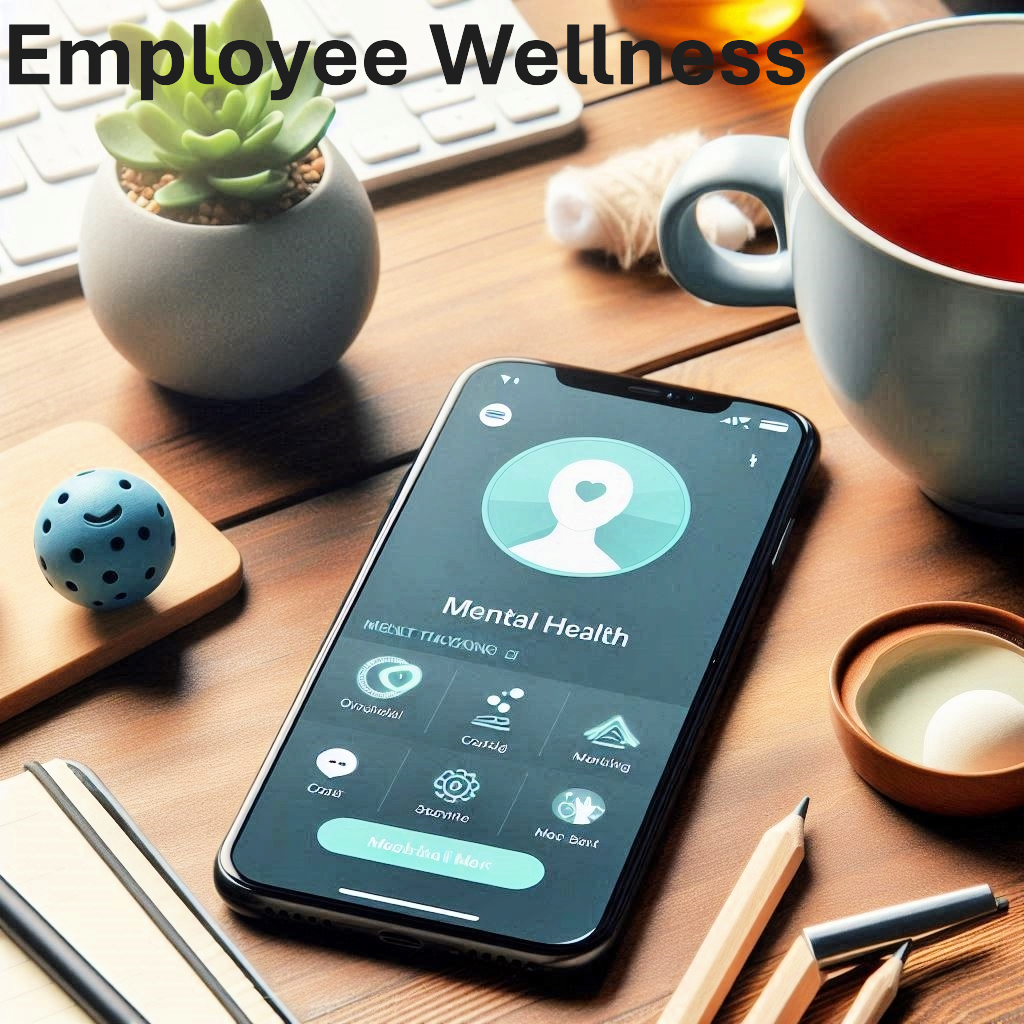I recognize that maintaining positive mental health in the workplace is crucial. The well-being and productivity of every employee hinges on it. But acknowledging the importance is only half the battle. Having actionable strategies in place to support mental health needs completes the picture.
 Promoting awareness and education is a solid starting point. When organizations educate their teams about mental health, the shadows of stigma start to lift. Resources like training sessions and workshops sponsored by Mental Health America lay a strong foundation. These initiatives are not just about disseminating information; they are vital for carving out a safe space where employees can openly discuss and seek help for their mental health concerns without fear of judgment.
Promoting awareness and education is a solid starting point. When organizations educate their teams about mental health, the shadows of stigma start to lift. Resources like training sessions and workshops sponsored by Mental Health America lay a strong foundation. These initiatives are not just about disseminating information; they are vital for carving out a safe space where employees can openly discuss and seek help for their mental health concerns without fear of judgment.
Once the stage for mental health awareness is set, what follows naturally is the implementation of tailored wellness programs. The contributions of these programs to workplace morale and mental health can’t be overstated. Think stress management and mindfulness sessions that equip employees with coping techniques, combined with fitness activities that foster both physical and mental resilience. According to the Office of Personnel Management, such programs have become indispensable in today’s corporate landscape.
I’m ready to take you through these transformative strategies, so you can understand how to weave them into the fabric of your organization. It’s about creating a culture where mental health isn’t an afterthought but a priority – a priority that manifests itself in happier, more productive, and fiercely loyal employees.
How To Help An Employee Who Is Struggling With Mental Health?
In today’s fast-paced work environments, prioritizing mental health is not just a matter of compassion; it’s a strategic imperative. As organizations increasingly recognize the link between employee well-being and overall productivity, they are implementing innovative strategies and programs to foster a mentally healthy workplace.
Promoting Mental Health Awareness: Breaking the Stigma
One of the fundamental steps toward building a mentally healthy workplace is to promote awareness and education surrounding mental health issues. According to a survey conducted by the American Psychiatric Association (APA), 88% of employees believe that mental health is just as important as physical health in the workplace, yet only 25% feel that their employer supports mental health well-being adequately. This highlights the critical need for organizations to invest in mental health awareness initiatives to break the stigma surrounding mental health issues (American Psychiatric Association, 2021).
Implementing Comprehensive Wellness Programs
Employee wellness programs serve as the cornerstone of mental health support in many organizations. A study by the International Foundation of Employee Benefit Plans (IFEBP) found that 80% of employers offer wellness programs, with mental health programs being the fastest-growing component. Furthermore, 95% of organizations reported that employee mental health is a top priority for their wellness initiatives (IFEBP, 2020). These statistics underscore the increasing recognition of the importance of mental health in the workplace and the growing investment in wellness programs to support it.
Providing Accessible Mental Health Resources

In addition to wellness programs, providing access to mental health resources is essential for creating a supportive workplace environment. According to a report by the World Health Organization (WHO), every $1 invested in scaling up treatment for common mental disorders such as depression and anxiety leads to a return of $4 in improved health and productivity. This demonstrates the significant impact that access to mental health resources can have on both individual well-being and organizational success (WHO, 2019).
Cultivating a Positive Work Environment
A positive work culture is paramount to fostering mental well-being among employees. According to a Gallup study, employees who strongly agree that they have a best friend at work are 7 times more likely to be engaged in their job. Moreover, engaged employees are more likely to report better overall well-being, including their mental health (Gallup, 2020). These findings emphasize the importance of building strong interpersonal relationships and fostering a supportive work environment to promote mental wellness.
Prioritizing mental health in the workplace is not just a trend; it’s a necessity. By implementing strategies and programs that support employee well-being, organizations can create a positive work environment where individuals thrive. From promoting awareness and education to providing access to resources and cultivating a supportive culture, every effort towards mental wellness is a step in the right direction. Together, let’s maximize workplace mental wellness and create environments where everyone can flourish.
What Is Included In An Employee Wellness Program?

Employee wellness programs have become indispensable for organizations looking to prioritize mental health in the workplace. These programs are multifaceted, aiming to address various aspects of well-being. However, to ensure the success and effectiveness of these initiatives, it’s essential to incorporate three key elements:
1. Comprehensive Health Assessments
A successful wellness program begins with a thorough understanding of employees’ health needs and challenges. Conducting comprehensive health assessments allows organizations to gather data on employees’ physical, mental, and emotional well-being. This information serves as the foundation for designing targeted interventions and personalized wellness plans. By leveraging data-driven insights, organizations can tailor their wellness programs to meet the specific needs of their workforce, ultimately maximizing engagement and effectiveness.
2. Diverse and Engaging Wellness Activities
Variety is key when it comes to wellness activities. A successful program should offer a diverse range of activities that cater to different interests, preferences, and fitness levels. From yoga and meditation sessions to nutrition workshops and team-building exercises, offering a variety of options ensures that there’s something for everyone. Additionally, incorporating elements of fun and creativity into wellness activities can increase participation and engagement among employees. By providing a dynamic and engaging wellness program, organizations can foster a culture of health and well-being that extends beyond the workplace.
3. Continuous Evaluation and Adaptation
Wellness is not a one-time initiative; it’s an ongoing journey. To ensure the long-term success of a wellness program, organizations must continuously evaluate its effectiveness and adapt accordingly. This involves gathering feedback from employees, tracking key metrics, and analyzing program outcomes. By monitoring progress and making necessary adjustments, organizations can identify areas for improvement and optimize their wellness initiatives over time. Moreover, demonstrating a commitment to continuous improvement reinforces employees’ trust and confidence in the program, encouraging sustained participation and investment in their health and well-being.
Incorporating these three key elements into a wellness program can significantly enhance its effectiveness and impact. By prioritizing comprehensive health assessments, offering diverse and engaging activities, and committing to continuous evaluation and adaptation, organizations can create a culture of wellness that empowers employees to thrive both personally and professionally.
Discovering Serenity: The Hidden Potential of Inner Peace in Mental Health Employee Wellness Programs
How To Tell Your Employer You’re Struggling With Your Mental Health

Struggling with mental health issues in the workplace can be challenging, but it’s essential to remember that you’re not alone. If you find yourself grappling with mental health challenges, it’s crucial to communicate openly and effectively with your employer to ensure you receive the support and accommodations you need. Here’s a step-by-step guide on how to navigate this conversation:
1. Prepare in Advance
Before initiating a conversation with your employer about your mental health, take some time to prepare. Reflect on your specific concerns, symptoms, and any accommodations or support you may require. It can also be helpful to research your company’s policies and resources related to mental health support. By arming yourself with information, you’ll feel more confident and empowered during the discussion.
2. Choose the Right Time and Setting
Timing and context are essential when discussing sensitive topics like mental health. Choose a time and setting that is private, quiet, and conducive to open communication. Avoid scheduling the conversation during busy or stressful periods, as this may distract from the discussion and diminish its effectiveness. By selecting an appropriate time and setting, you can ensure that both you and your employer can focus fully on the conversation at hand.
3. Be Honest and Direct
When discussing your mental health with your employer, honesty is key. Be transparent about your experiences, symptoms, and how they are impacting your work performance. Avoid minimizing or downplaying your struggles, as this may hinder your employer’s ability to provide meaningful support. Instead, communicate your needs clearly and assertively, emphasizing the importance of finding effective solutions together.
4. Offer Solutions and Suggestions
While it’s essential to communicate your challenges, it’s also helpful to come to the table with potential solutions or suggestions. Whether it’s requesting flexible work arrangements, access to mental health resources, or accommodations to support your well-being, offering proactive solutions demonstrates your commitment to finding constructive ways forward. By working collaboratively with your employer, you can identify feasible strategies that meet both your needs and the organization’s objectives.
5. Follow Up and Maintain Open Communication
After discussing your mental health concerns with your employer, follow up periodically to review your progress and any adjustments that may be needed. Maintain open communication channels, keeping your employer informed of any changes or developments related to your mental health. By fostering ongoing dialogue and transparency, you can ensure that you continue to receive the support and accommodations you need to thrive in the workplace.
Navigating conversations about mental health with your employer can feel daunting, but it’s an essential step toward prioritizing your well-being. By preparing in advance, choosing the right time and setting, being honest and direct, offering solutions, and maintaining open communication, you can navigate these discussions with confidence and advocate for the support you deserve.

